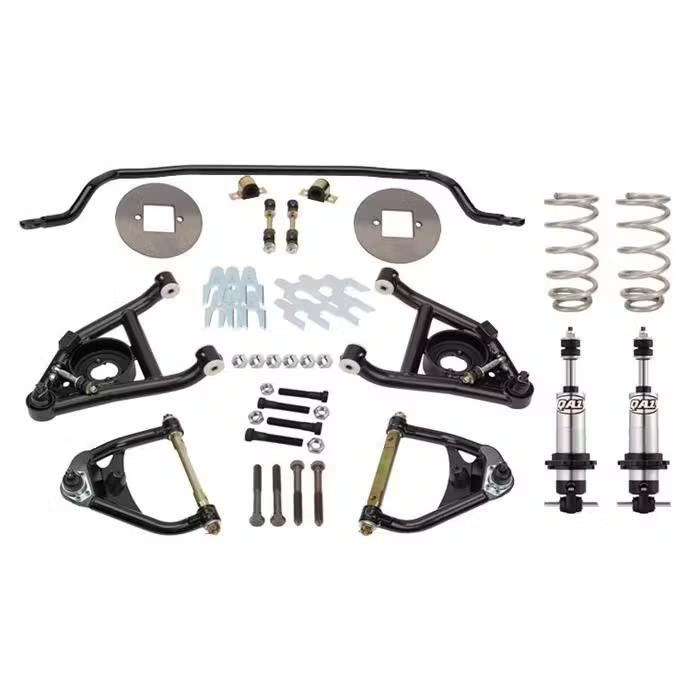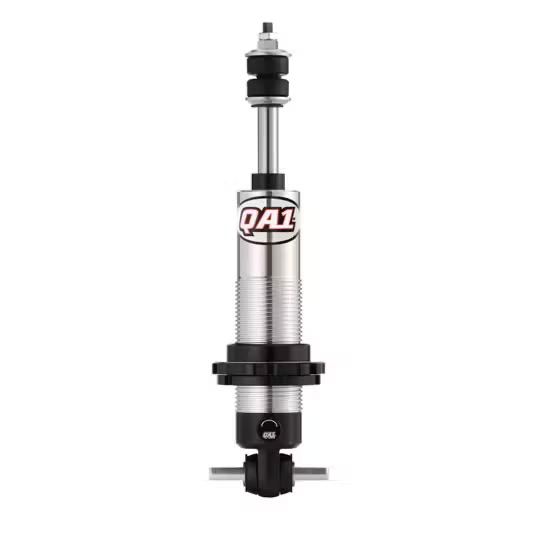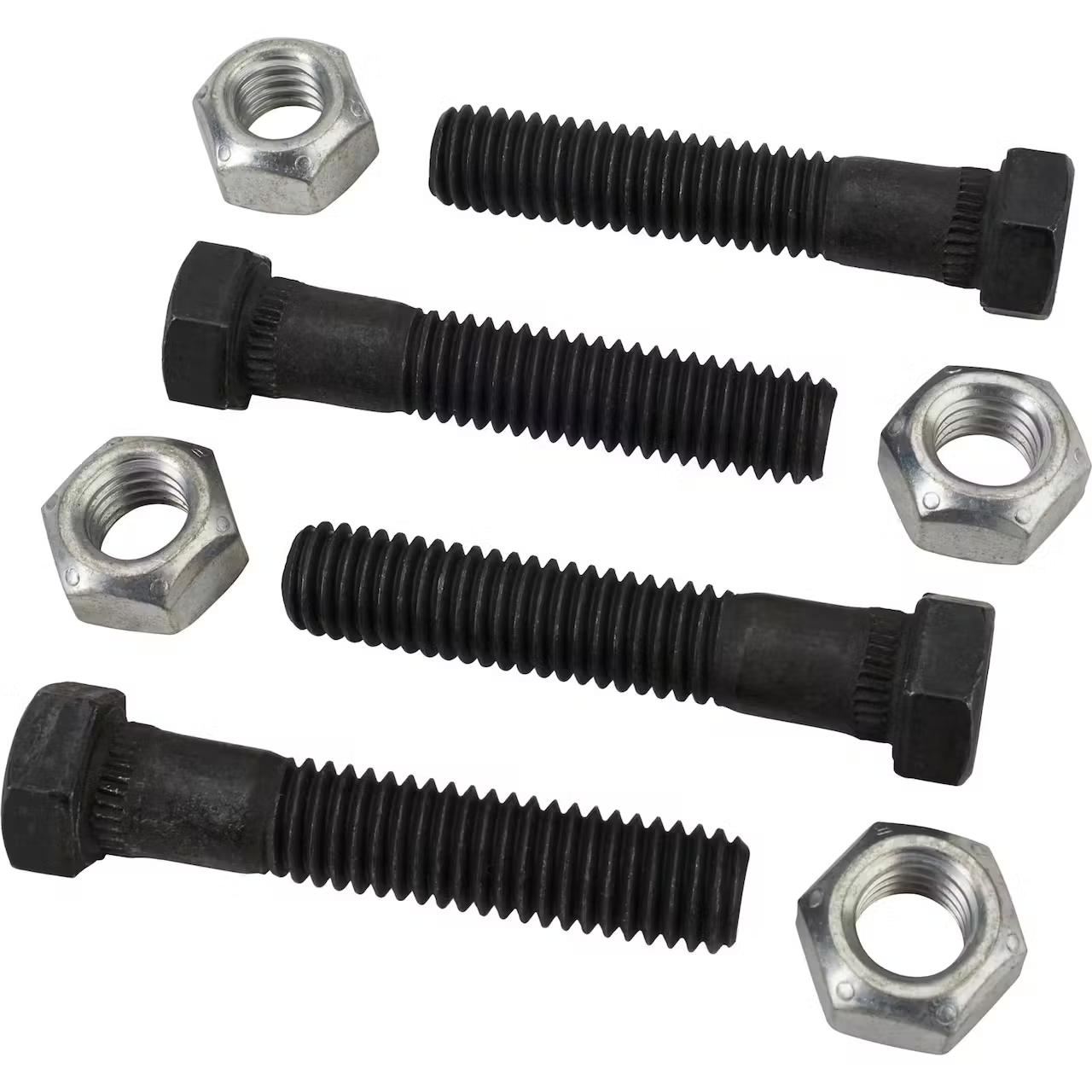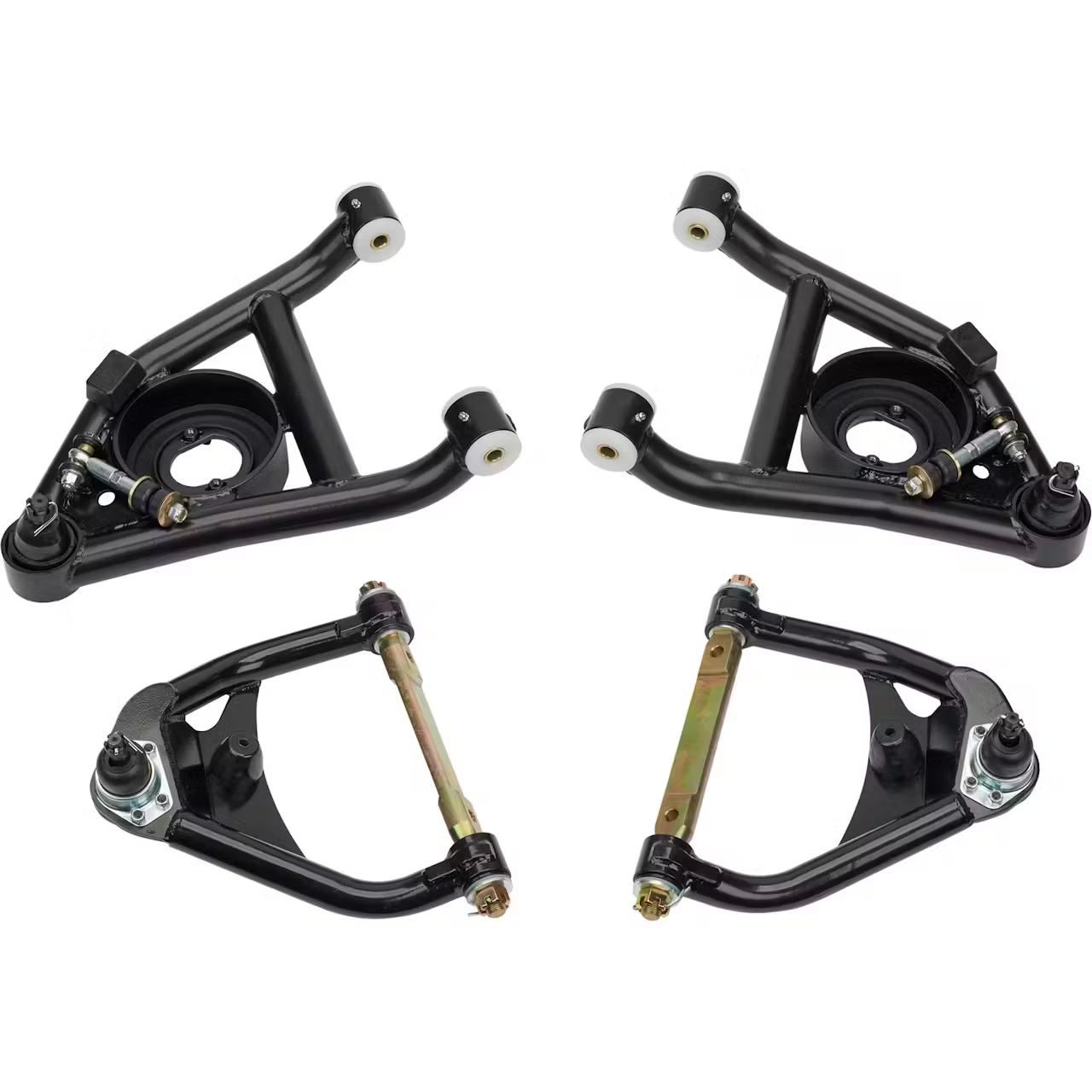📦 Tubular Lower Control Arms – Mustang II IFS Upgrade
Upgrade your Mustang II IFS-equipped hot rod with high-strength tubular lower control arms, engineered for improved handling, stability, and modern aesthetics. Unlike stock stamped steel arms, these tubular control arms eliminate ugly strut rods, reducing flex and enhancing suspension geometry.
✅ Durable .120” Wall Tubing Construction – Built for high performance & longevity
✅ Screw-In Ball Joints for Easy Serviceability – No need to replace the entire arm
✅ No-Squeak Rubber Bushings – Maintenance-free & noise-resistant
✅ Works with Air Ride Suspension & Wilwood Brakes – Perfect for custom builds
⚠ Note: Some applications require welding for proper fitment. Check installation guide for details.
🔹 Key Features & Benefits
✅ Heavy-Duty Tubular Construction – Made from .120” wall, 1” diameter steel tubing
✅ Eliminates Strut Rods – Cleaner look & improved suspension geometry
✅ Compatible with Air Ride Suspension – Designed for optimal ride quality
✅ Compatible with Wilwood Brakes – Ensures proper brake fitment
✅ Works with Stock or Aftermarket Crossmembers – Universal adaptability
✅ Stock Width Configuration – Available in 5/8” narrower version for improved wheel fitment
✅ Easy Ball Joint Replacement – Screw-in design for convenient maintenance
✅ Includes No-Squeak Bushings – Long-lasting & maintenance-free
🔹 Technical Specifications
⚙️ Control Arm & Suspension System
| Feature | Details |
|---|---|
| Vehicle Fitment | Mustang II IFS-Equipped Hot Rods |
| Control Arm Style | Tubular, No-Strut Rod |
| Material Type | Steel (.120” Wall, 1” Diameter Tubing) |
| Position | Lower |
| Mount Center to Ball Joint Center | 13.13” |
| Ball Joint Type | Screw-In |
| Bushing Material | Rubber (No-Squeak) |
| Welding Required? | Yes, on most applications |
⚙️ Fitment & Compatibility
| Feature | Details |
|---|---|
| Stock or Aftermarket Crossmembers | Works with Both |
| Compatible with Air Ride Suspension? | Yes |
| Compatible with Wilwood Brakes? | Yes |
| Stock Width? | Yes (5/8” Narrower Version Available) |
| Modifications Required? | Welding May Be Needed |
❓ Frequently Asked Questions (FAQ)
🔹 What’s the advantage of tubular control arms over stock?
- Stronger & More Durable – Eliminates flex found in stamped steel arms
- Improved Suspension Geometry – Reduces body roll & increases handling precision
- Better Aesthetics – Cleaner, modern look for custom hot rods
🔹 Does this kit fit all Mustang II IFS setups?
- Yes, it works with both stock and aftermarket Mustang II crossmembers. Some applications may require welding for fitment.
🔹 Are these control arms compatible with air ride suspension?
- Yes! These arms are designed for Air Ride Suspension systems, ensuring proper fitment & ride quality.
🔹 Do I need to modify my vehicle to install these arms?
- In most applications, welding is required. Check the installation guide for details.
🔹 What if I want a narrower front track width?
- We offer 5/8” narrower versions that help tuck wheels under fenders without requiring expensive offset wheels.
🔹 Do these work with Wilwood disc brakes?
- Yes! These control arms are designed to fit Wilwood brake systems for improved stopping power.
🔥 Call to Action – Order Now!
Upgrade your Mustang II IFS-equipped hot rod with heavy-duty tubular lower control arms for better handling, modern aesthetics, and improved durability.
Say goodbye to flex-prone stamped steel arms & outdated strut rods, and enjoy a cleaner, stronger suspension setup!
🛒 Limited stock available – Order today for fast shipping! 🚀
Kit Includes
- (1) 1964-72 GM A Body Chevelle Tubular Upper and Lower Control Arms
- (1) Replacement Upper Control Arm Shaft Bolts/Nuts, 1964-74 GM
- (1) Classic Headquarters W-547A Lower Frame Bolt Set, Nova/Camaro
- (4) 1/2″-13 Zinc Plated Steel Top Lock Nut
- (6) A-Arm Control Arm 1/32 Inch Alignment Shim, 9/16 Slot Size, Zinc
- (6) A-Arm Control Arm 1/8 Inch Alignment Shim, Zinc
- (1) Front Sway Bar Kit, 1.25 Inch, 1964-77 GM A-Body
- (2) QA1 GMP Coil-Over Spring
- (2) QA1 Adjustable Pro-Coil Shock
- (1) Tubular Lower Control Arm Coilover Reinforcement Plate
Prepping Control Arms for Coil-Overs – 1967 Chevelle
As promised, this article dovetails off the end of the control arm article. Since these two projects were done concurrently, now seems like a good time to cover the process of prepping these arms for use with coil-overs.
Normally the front shock absorber mounts from below the control arm with bolts that tread into a speed nut or welded nut (in this case) on the lower control arm. When you change that shock absorbers work load to also include supporting the weight of the vehicle, which requires that you place that load on top of the control arm in order for the load to transfer to the arm via direct contact rather than through the tensile load on the bolts. Below, I’ll detail the steps that I took to ensure this conversion would perform and last.

I drilled out the old nuts as best as I could with a step drill, ensuring that I didn’t open up the holes in the control arm any larger than the newly required 3/8”. Then I was able to break away most of the remaining nuts with lineman’s pliers to leave just the welds to be ground. I ground and smoothed away the welds with a cutoff wheel on my angle grinder.

Since the new hardware supplied with the QA1 coilovers upgraded these fasteners to 3/8” fine thread, I drilled those holes to the new dimension after grinding was complete.

This led me to a new concern. The way that the “top hat” for the lower shock mount is designed leaves a large, unsupported area directly under where the cross-bar of the coil-over will rest. Given the punishment that a big block, plus air conditioning, plus aggressive driving will give, I decided to try and come up with a way to beef this area up.

What I came up with is this. Now sold under part #910-3610, this reinforcement plate sandwiches between the coil-over lower mount and the mounting pad on the arm. This plate takes the load and spreads it across the entire top-hat area and being over-sized also provides a block-off plate for the now unused coil spring pocket. Which may otherwise collect debris.
With prototype parts in hand I assembled the coil-overs per the instructions provided by QA1. I opted to add the Torrington bearing kit as well to aid in future ride height adjustments.


During installation I noted that the increased thickness of the plates caused the bolts not to protrude far enough into the nylock nuts to actually engage the locking ring. I chose to source new bolts that are .25” longer to ensure good engagement.
Something else that I’ve found essential to happy life with coil-overs, is the liberal application of anti-seize to the aluminum threads on the body of the shock. This will pay dividends down the road when you want to make adjustments to your setup.
All in all, this was a very productive upgrade and went a long way toward my goal of getting the car back down on the ground and on four wheels again.


























Reviews
There are no reviews yet.